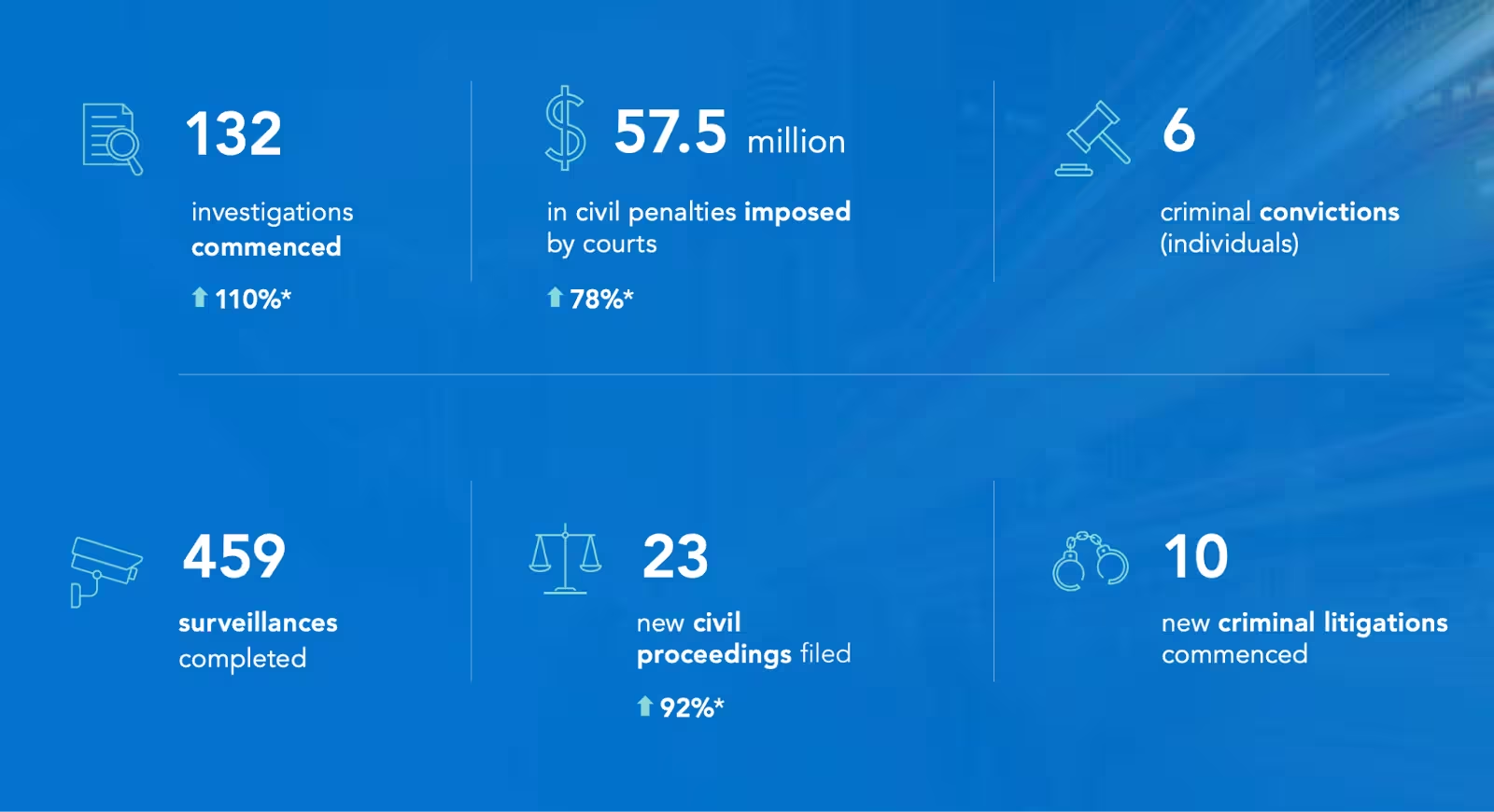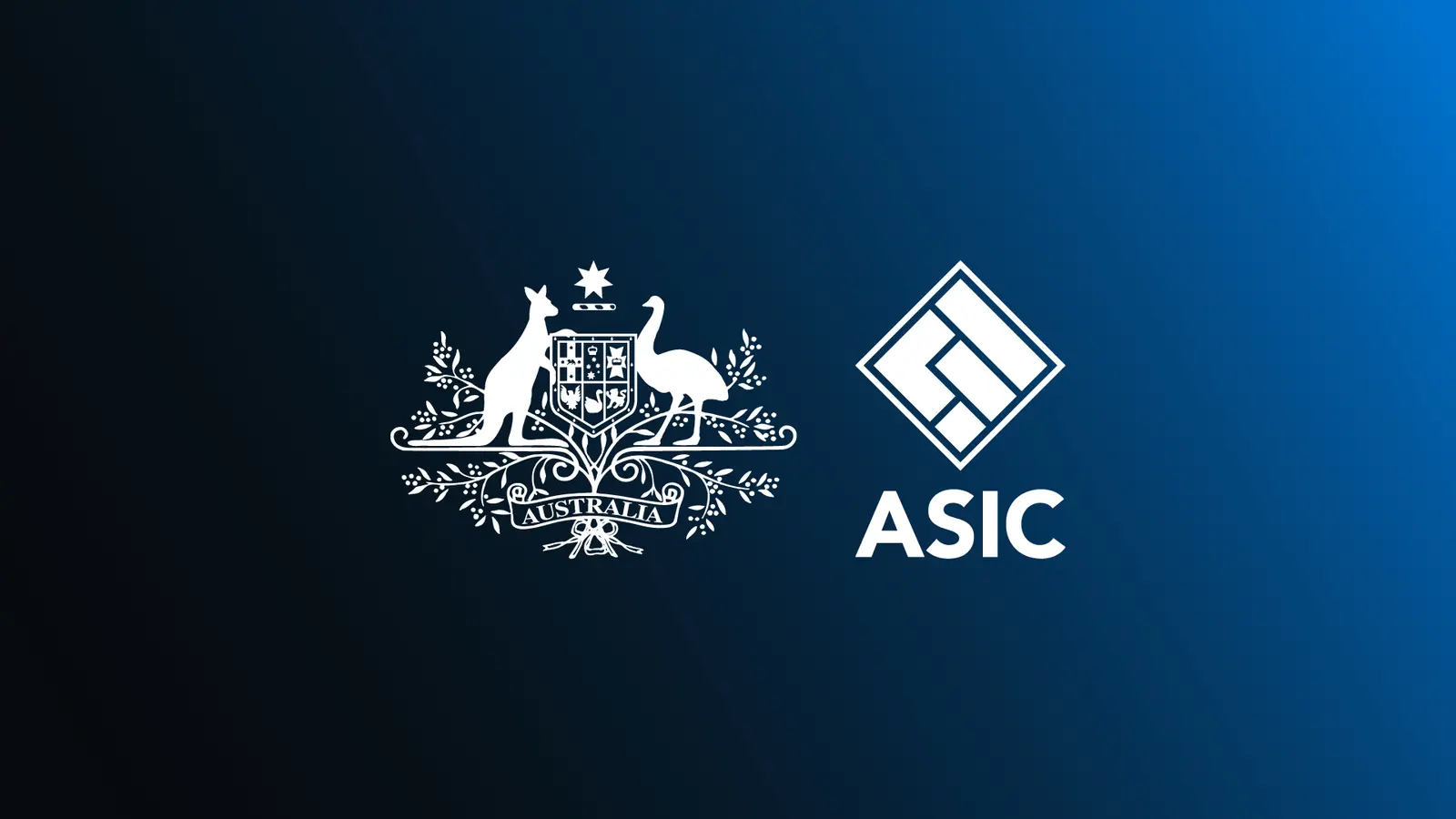5 Minutes
ASIC’s two-year takedown campaign
The Australian Securities and Investments Commission (ASIC) has removed more than 14,000 investment scam and phishing websites since July 2023, with crypto-related fraud accounting for roughly 3,015 of those takedowns — about 20% of the total. The regulator continues to dismantle an average of 130 malicious sites per week, and has broadened its takedown remit to include social media advertisements that promote fraudulent investment opportunities.
How scammers are adapting
ASIC’s latest enforcement update highlights a surge in sophisticated tactics used by fraud networks. Scammers are leveraging AI-powered narratives and deceptive technology to mimic legitimate crypto and trading services. Key techniques include:
- AI washing schemes that claim fake trading bots can produce steady passive income;
- Ready-made website templates that allow criminals to spin up convincing copycat platforms in minutes;
- False news articles and AI-generated celebrity endorsements designed to add perceived credibility;
- Cloaking methods that change site content based on a visitor’s location or device, while third-party integrations mimic genuine services to create a veneer of legitimacy.
Enforcement outcomes — H1 2025
ASIC reported substantial results in the first half of 2025: courts imposed $57.5 million in civil penalties, authorities recorded six criminal convictions, and 345 new investigations were opened. The regulator also wound up 95 companies tied to international “pig butchering” schemes after receiving nearly 1,500 victim reports totaling $35.8 million in losses across 14 countries.
ASIC enforcement and regulatory update January to July 2025 Source: ASIC
Systematic campaign against the scam economy
Investment scams continue to be the predominant fraud affecting Australians. Despite a 25.9% drop from the 2022 peak of $3.1 billion, scams still cost victims $945 million in 2024. ASIC’s enforcement priorities include protecting superannuation savings, policing business models that bypass consumer credit safeguards, and tackling greenwashing tied to environmental claims.

Notable penalties and corporate actions
ASIC secured major fines against financial institutions this reporting period. Examples include a $27 million penalty for AustralianSuper for failing to consolidate member accounts for 90,700 members over a decade, and a $10.5 million penalty for Active Super related to greenwashing. The regulator has added roughly 500 unlicensed platforms to its Moneysmart Investor Alert List while coordinating weekly removal of more than 130 malicious websites and publishing targeted consumer warnings.
The agency charged Mormarkets Pty Ltd director Brendan Gunn for dealing with suspected proceeds of investment scams. Earlier in the year, Federal Court Justice Angus Stewart approved winding-up orders for 95 fraudulent companies, citing overwhelming evidence that the businesses had been registered using false information. Joint liquidators found only three companies with assets and recommended deregistration for the remaining 92.
Crypto compliance crackdown: AUSTRAC and cross-agency action
Australian authorities have intensified oversight of crypto companies, using coordinated enforcement to target non-compliant exchanges and money-laundering networks. AUSTRAC has recently ordered Binance Australia to appoint external auditors after identifying serious anti-money laundering (AML) and counter-terrorism financing concerns, giving the exchange 28 days to nominate candidates.
AUSTRAC’s broader campaign targets multiple remittance and digital currency exchange providers: 13 operators have been scrutinised for systemic compliance issues, while 50 more remain under investigation. The regulator has cancelled, suspended, or refused license renewals for nine providers that failed to meet obligations under the Anti-Money Laundering and Counter-Terrorism Financing Act.
Registry transparency and dormant providers
AUSTRAC warned 427 registered digital currency exchange providers that appeared inactive that they risk deregistration unless they withdraw voluntarily. Inactive listings can be exploited by criminals seeking legitimacy, so AUSTRAC plans to launch a publicly searchable register allowing consumers to verify whether a crypto exchange is officially registered and under regulatory scrutiny. This registry aims to reduce criminal misuse of legitimate-looking platforms and improve investor protection.
Prosecutions and crypto-forensic enforcement
ASIC charged former barrister Dimitrios Podaridis and three others for allegedly converting victim funds into cryptocurrency between January and July 2021 using fake comparison websites and forged documentation that mimicked major financial services providers. Separately, AUSTRAC has formed a crypto task force to investigate compliance breaches by crypto ATM operators across Australia’s roughly 1,600 machines — the highest concentration in the Asia-Pacific region.
What this means for investors and the crypto industry
Regulators in Australia are stepping up enforcement across the crypto ecosystem — from unlicensed exchanges and cash-out points like ATMs to the online domains and social ads that recruit victims. For crypto investors, the key takeaways are clear: verify an exchange’s registration status, be skeptical of guaranteed returns or celebrity endorsements, and always report suspicious platforms to regulators. Enhanced AML requirements and improved public registries should make it harder for fraudsters to operate with impunity, but vigilance from the community remains essential.
Source: cryptonews


Leave a Comment